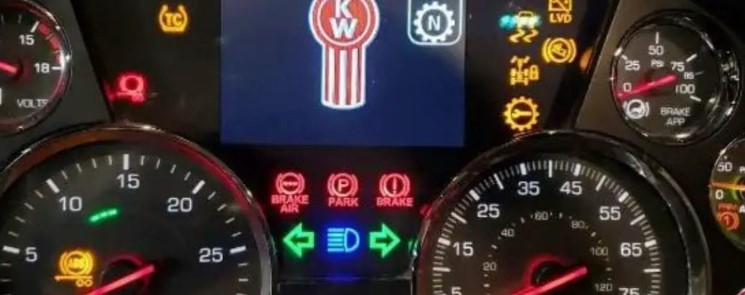The Kenworth T680 is a reliable truck model that comes with a sophisticated dashboard system. It includes a series of warning lights that can be confusing to interpret. Unlocking the secrets behind these dashboard warning lights can help drivers understand what each light means and how to respond to them. With the right knowledge and guidance, drivers can stay on top of their truck’s performance and keep their vehicle running smoothly.
Unlocking the Secrets Behind Kenworth T680 Dashboard Warning Lights
Understanding the dashboard warning lights in your Kenworth T680 can be the key to keeping your vehicle running smoothly. In this article, we explore the meaning of each warning light, what to do if they appear, and how to prevent them from occurring in the first place. We’ll also provide a comprehensive Kenworth T680 Dashboard Warning Lights table so you can quickly identify and respond to any potential issues. With this knowledge, you can stay on top of your truck’s performance and keep it in top condition.
Check Engine
The check engine light is located in the center of the dash and is the most important one to pay attention to. It indicates a wide range of issues with the truck’s engine, from minor malfunctions to major problems that could put the truck at risk of breaking down. The Kenworth T680 dashboard warning light for the check engine is the most important one to pay attention to since it can indicate a wide range of issues with the truck’s engine.
Battery
The battery light is located on the left side of the dashboard and is typically yellow or red. It indicates that the battery is not receiving enough power, either due to a malfunctioning alternator or a weak battery. Drivers should check the battery’s voltage and get it replaced if necessary. The Kenworth T680 dashboard warning light for the battery indicates that the battery is not receiving enough power, so it is important to check the battery’s voltage and replace it if needed.
Oil Pressure
The oil pressure light is located on the right side of the dashboard and is typically red. It indicates a lack of oil pressure in the engine, which can be caused by a variety of issues such as an incorrect oil type, a clogged filter, or a faulty oil pump. Drivers should check the oil level and consult a mechanic if necessary. The Kenworth T680 dashboard warning light for oil pressure indicates a lack of oil pressure in the engine, meaning drivers should check the oil level and consult a mechanic if necessary.
Key Takeaways for Interpreting Kenworth T680 Dashboard Warning Lights
- The check engine light is the most important one to pay attention to since it can indicate a wide range of issues with the truck’s engine.
- The battery light indicates that the battery is not receiving enough power, so it is important to check the battery’s voltage and replace it if needed.
- The oil pressure light indicates a lack of oil pressure in the engine, so drivers should check the oil level and consult a mechanic if necessary.
- Understanding the meaning of each warning light and how to respond to them can help drivers stay on top of their truck’s performance and keep it running smoothly.
Interpreting Kenworth T680 Dashboard Warning Lights – A Guide for Drivers
By understanding the meaning of each of the Kenworth T680 dashboard warning lights and how to respond to them, drivers can stay on top of their truck’s performance and keep it running smoothly. It is important to pay attention to the check engine light since it can indicate a wide range of issues with the engine. The battery light should also not be ignored, as it indicates that the battery is not receiving enough power. Drivers should check the battery’s voltage and get it replaced if necessary. Similarly, the oil pressure light can indicate a lack of oil pressure in the engine, so drivers should check the oil level and consult a mechanic if necessary. Being aware of the significance of these warning lights and taking the necessary steps to address them can help drivers maintain the performance and longevity of their truck.
